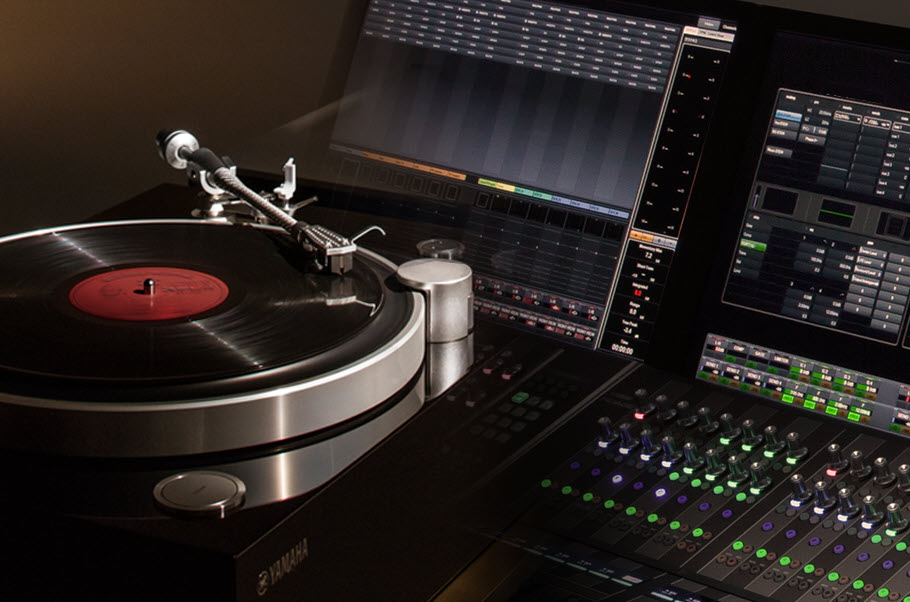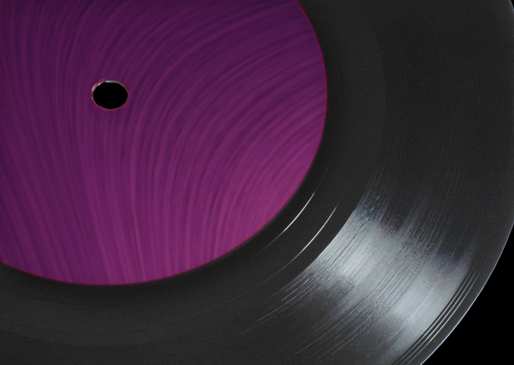Creative Vocal Tricks, Techniques and Tracks to Listen to on Vinyl
Whether you’re looking to dig deep or just sing along, these are must-listens.
The analog smoothness that only vinyl can offer really lends itself to vocals. The more complex the harmonies and styling, the better. Here are a few of my favorite vocal-centric tracks for you to investigate. Curl up in your listening chair, relax and get in the mood for some deep listening … and by all means, sing along!
The Beatles – “Because” (Abbey Road)
Beyond their obvious flair for writing memorable songs, John Lennon and Paul McCartney (along with, sometimes, George Harrison) had a remarkable ability to blend their voices together. From the Everly Brothers-like tight harmonies of “Please Please Me,” “This Boy,” “If I Fell” and “Two of Us” to the soaring countermelodies of “Help” and “I’ve Got a Feeling” (not to mention the astonishing 6th-chord “yeah” that ends “She Loves You”), The Beatles combined and refined their influences — primarily English music hall music and 1950s R&B — in unusual and sonically challenging ways, in the process redefining rock vocals for all time.
Perhaps nowhere is this more in evidence than on the track “Because” from the group’s final album, Abbey Road. Nearly completely a cappella (the only accompaniment is a harpsichord playing arpeggios derived from the chords to Beethoven’s Ninth Symphony played backwards), the track consists of nine gorgeously intertwined vocal lines, sung to perfection by Messrs. Lennon, McCartney and Harrison. Amazingly, according to their engineer Geoff Emerick, they recorded these vocals live in just five hours, with the three Beatles gathered in a semi-circle singing their different parts simultaneously (with Paul giving hand signals to ensure proper phrasing and drummer Ringo Starr sitting on a nearby stool lending moral support), then repeating the process twice more. If you want to dig even deeper into this stunning display of vocal mastery, you can find remixed (and completely a cappella) versions of “Because” on the 1996 outtakes compilation Anthology 3, as well as on 2006’s Cirque du Soleil mashup Love.
The Beatles – “I Am the Walrus” (Magical Mystery Tour)
This track stands out not so much for the Beatles’ vocals (though John Lennon, who reportedly hated the sound of his voice, insisted on singing his lead into a cheap microphone put through a fuzz box) but for the histrionics of the Mike Sammes Singers, hired by producer George Martin to liven things up by adding assorted “whoo”s,” “ha ha ha hee hee hee”s and pig snortings. Towards the end of the (very long) fadeout, Lennon had the idea of superimposing the sound of a radio broadcast, and you can hear various snatches of dialog from the Shakespeare play The Tragedy of King Lear as Ringo twiddles the dial, further adding to the wash of psychedelia. Turn on and tune in, man!
The Rolling Stones – “You Can’t Always Get What You Want” (Let It Bleed)
While many associate the Beatles with studio creativity, the Rolling Stones were no slouches in that department either. This legendary track, long a Stones concert staple, opens with a chorus sung by a choir of 60 schoolchildren, double-tracked for a huge, expansive sound. The female backing vocals that later soar in and out of the mix lend an atmospheric effect that flattens out when merely streaming this classic or listening to it on CD.
The Beach Boys – “God Only Knows” (Pet Sounds)
Brian Wilson is the unquestioned modern master of vocal harmony and arrangement, and with such a broad catalog of work, it’s hard to know which Beach Boys song to choose. But I’m going to go with “God Only Knows,” not because Paul McCartney considers it the best song ever written, and not even because it comes from Pet Sounds, which many critics consider to be one of the greatest albums ever recorded, but because of the clever way it makes use of the centuries-old musical device known as a round. (Think “Three Blind Mice” or “Frère Jacques,” where a simple melody is repeated but at different starting times so as to create varied harmonies with each occurrence.)
Here, Wilson not only has the first line of the chorus sung repeatedly during the fadeout, each time staggered by a few beats, but he has a different group member singing it — even little-used Bruce Johnston, whose voice is rarely featured so prominently on Beach Boys records — adding a striking tonal variation to the ever-shifting harmonies. For an example of more Wilson wizardry on that same album, check out the sudden, and stunning, a capella breakdown in the middle of “Sloop John B.”
Crosby, Stills & Nash – “Helplessly Hoping” (Crosby, Stills & Nash)
CSN’s debut record, released in 1969, is a marvelous example of how three voices can blend together so seamlessly, the whole becomes greater than the sum of the parts. In numerous interviews, Messrs. Crosby, Stills and Nash have talked about the first time they heard themselves sing together, and the magic that ensued. When you listen to “Helplessly Hoping,” you can hear it! All three sing lead, with equal volume and presence as they enter in turns before singing together to create a big wall of sound. This track lends itself especially to vinyl, because a great analog setup illustrates the nuances in each of their voices, instead of just sounding like one big, fat, overdubbed vocal.
Michael Jackson – “Billy Jean” (Thriller)
Thriller is one of the biggest selling records in history for a reason — it’s that good, and Michael Jackson was a supreme sonic craftsman as well as an amazing vocalist. (Fun fact: Even though recording engineer Bruce Swedien did 91 separate mixes of “Billie Jean,” the second take is the one that appears on the album.)
Like a great movie that reveals more nuance with repeated viewings, this track is loaded with musical tidbits. Take, for example, the strident “don’t think twice” echoed vocal you hear answering Michael’s lead at around two minutes in. Producer Quincy Jones had MJ sing it through a six-foot long cardboard tube. Once you hear it, you’ll never be able to un-hear it! Crazy.
Squeeze – “Tempted” (East Side Story)
This Brit band hit the scene in 1974, featuring signature harmonies from co-founders Glenn Tilbrook and Chris Difford, where Tilbrook goes way up high and Difford goes way, way low. By the time Elvis Costello took the reins to produce their fourth album, East Side Story in 1981, the music press was calling the pair “the next Lennon and McCartney.” Every track on this record offers interesting vocal work, but “Tempted” is the jewel. New recruit Paul Carrack sings the lead vocal, with Difford and Tillbrook solidly backing him up. If you listen really closely, you can hear Elvis Costello singing backup as well.
Shriekback – “Underwaterboys” (Big Night Music)
Old-school rock magazine Trouser Press once said Shriekback records “always featured insidiously weird vocals.” They came by it honestly, with lead singer Barry Andrews having worked with the likes of XTC, Robert Fripp and Gang of Four.
Andrew’s voice is heavily processed here, layered over the main vocal, along with at least two female vocal tracks above him. The better your system, the more nuance you’ll hear, and you can’t stream this one, at least not at the time of this writing. The CD versions are only mediocre, so a vinyl pressing is the way to go … or, if you’re in a totally ’80s mode, choose the cassette instead. Don’t laugh: Cassette copies of Big Night Music fetch over $50 each if you can find them!
Laurie Anderson – “O Superman” (Big Science)
This was the song that launched Laurie Anderson’s career. She put multiple layers of her voice (some recorded through the then-new Vocoder) over a looped “ha, ha, ha, ha,” then added a harmonizer effect for a totally weird yet compelling sound. Though this track is packed with layers of information, it manages to still have a lot of space and ambience. It’s hard to believe that it was produced on a $500 budget and recorded in Andersons’ hallway.
Joni Mitchell – “Car on a Hill” (Court and Spark)
Court and Spark is Joni Mitchell’s most successful record in terms of airplay, record sales and critical reviews. This album, her sixth, also marks a solid transition from Mitchell’s folky beginnings to a jazzier, more experimental path.
Always known for having a wide vocal range, Mitchell hits some of the highest notes of her career in the chorus of “Car on a Hill.” She also employs a harmonizer effect extensively, along with major multitracking to thicken the presentation. Graham Nash, David Crosby, and even the comedy duo Cheech & Chong provide backing vocals elsewhere on the record, but this track is all Joni.















